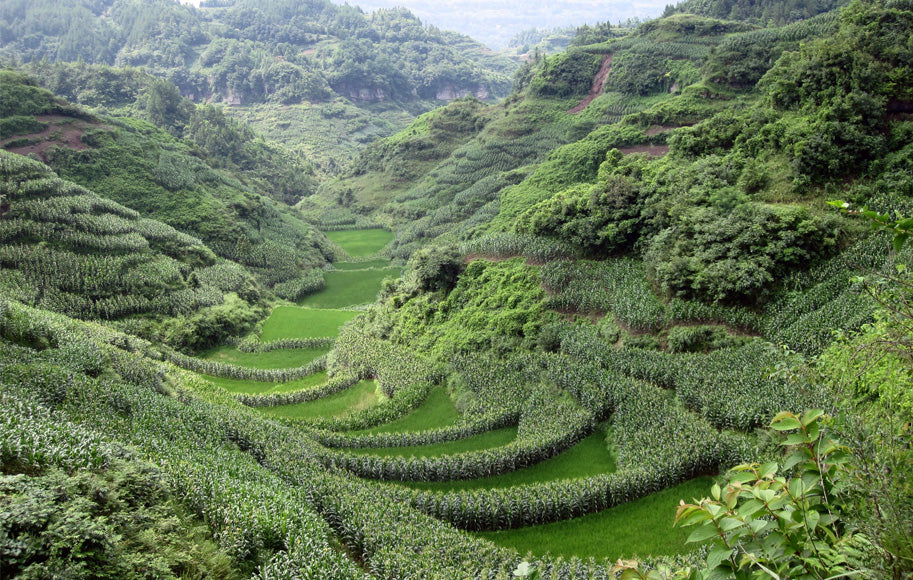
Our journey began in Lichuan, a city at the far Western end of the diocese. Here we are approaching Mahuang Village outside of Lichuan, with its verdant scenery and rich agriculture.
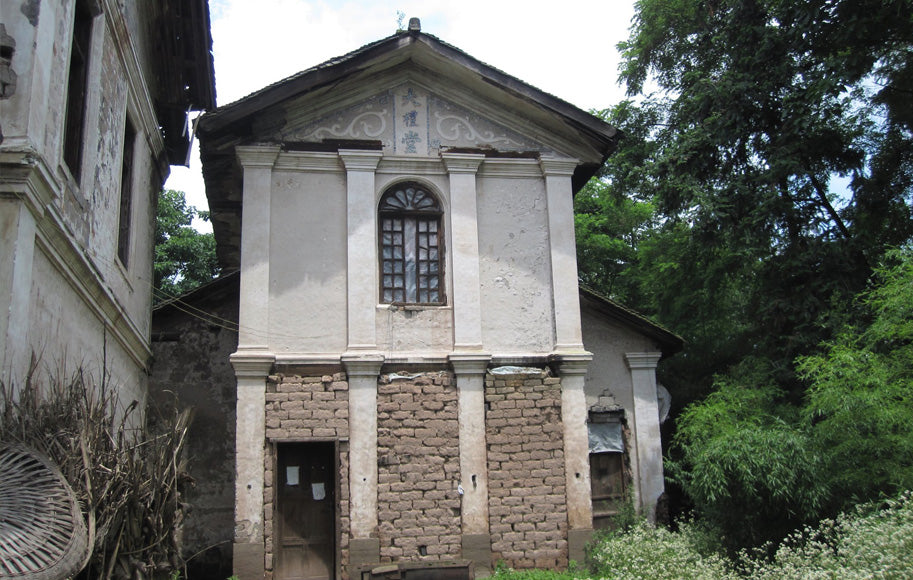
The church and residence in Mahuang Village have been abandoned and are nearing collapse.
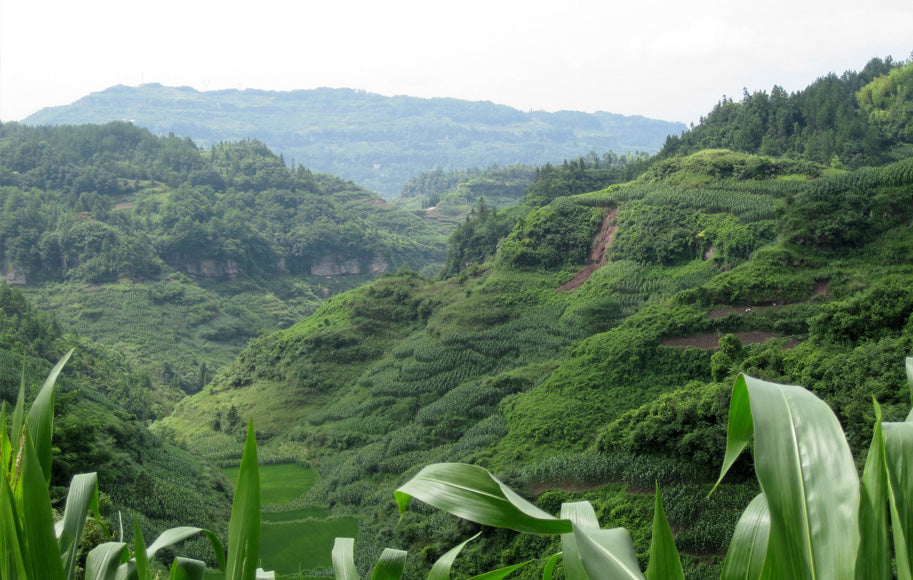
The rugged terrain around Mahuang Village reminded me of the spirit of the original missionaries, hiking through harsh conditions to share the gospel.
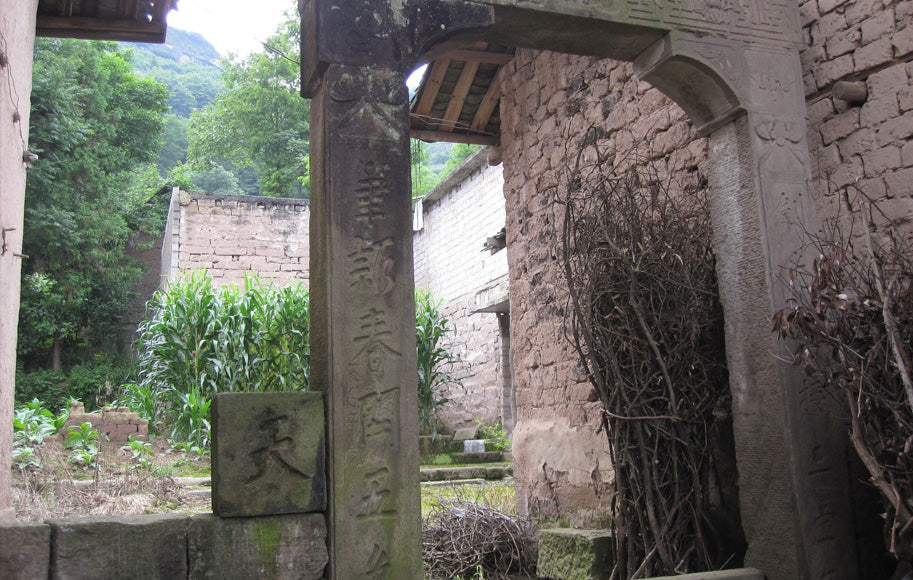
We then traveled north to Zhiluo Village. Except for this doorway, the church no longer exists.
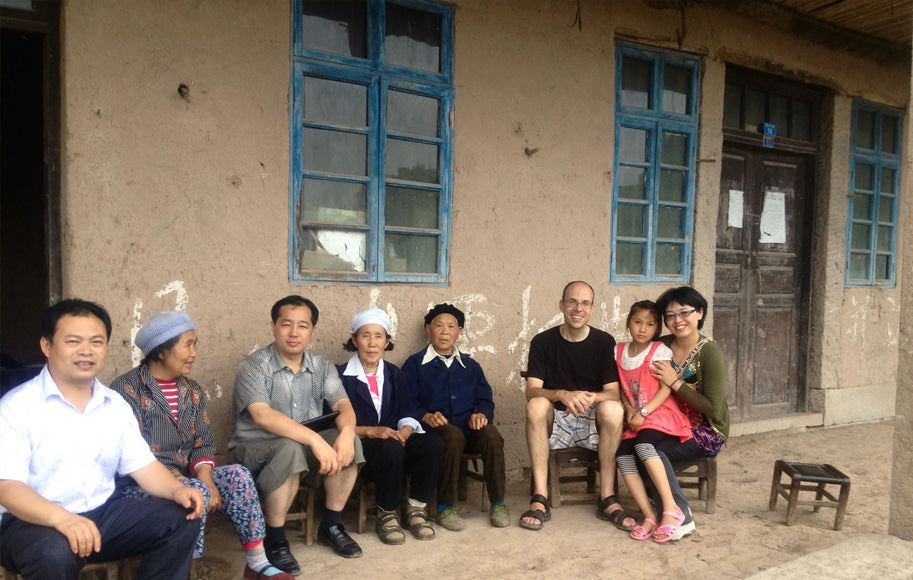
Fathers Li Xiaoguo and Peter Zhu joined me and some of the Zhiluo villagers to discuss the Catholic history of the village. Believers here now must travel to attend mass 45 miles away over some inhospitable roads.
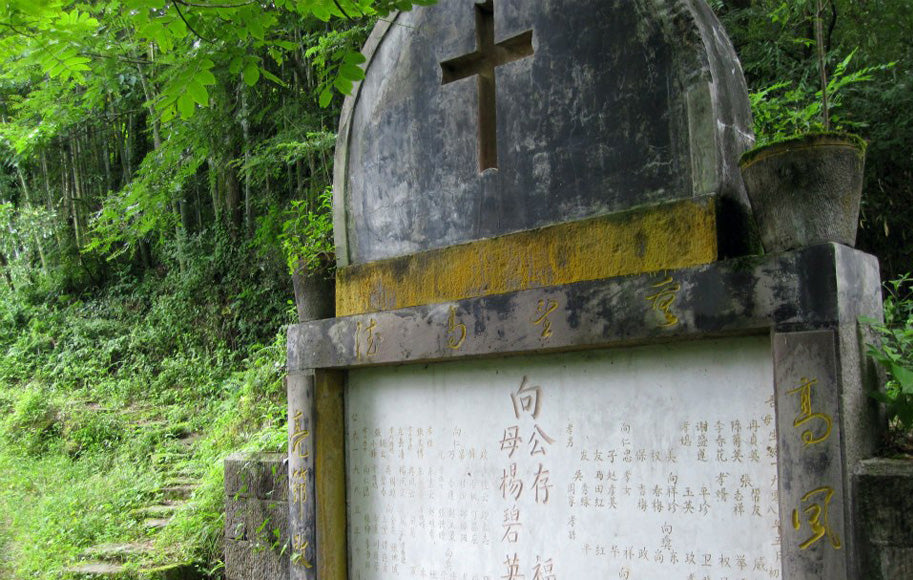
Tombstones with crosses can be found in Zhiluo Village, giving testament to the faith of the believers who have gone before us.
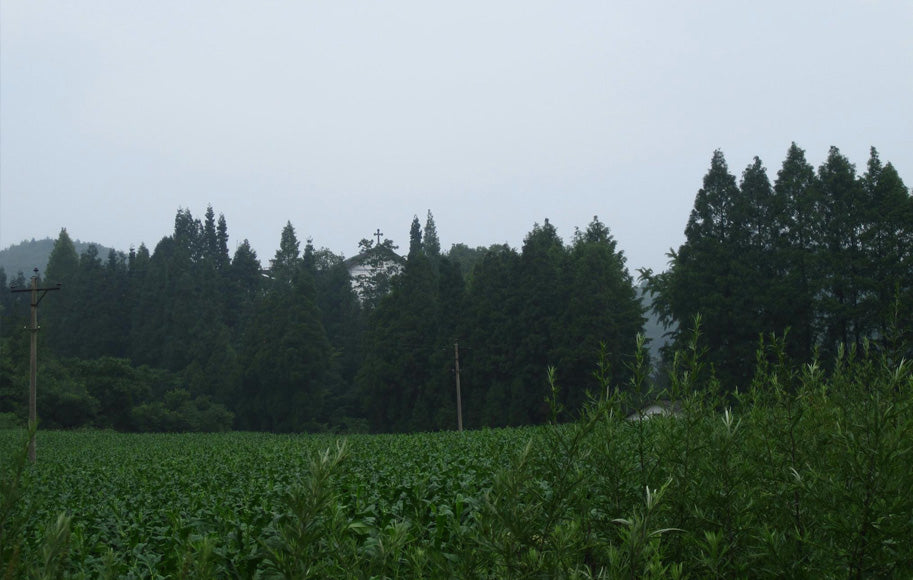
Lichuan does not have not have a church. The closest church is about 8 miles to the West down a string of dirt roads, in the neighboring Hualiling district.
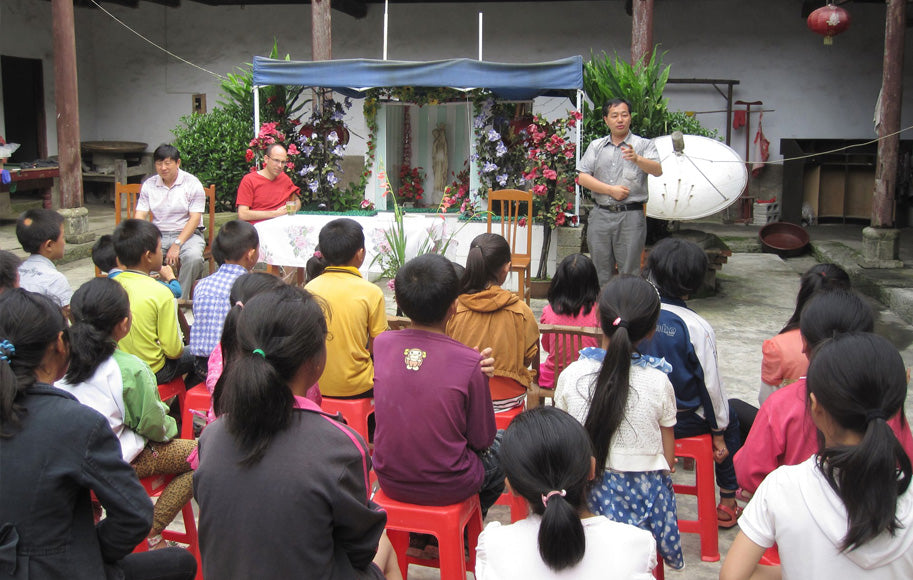
Father Li Xiaoguo leads the opening ceremony for 25 children as a two-week summer camp begins at Hualiling. I then taught the first class.
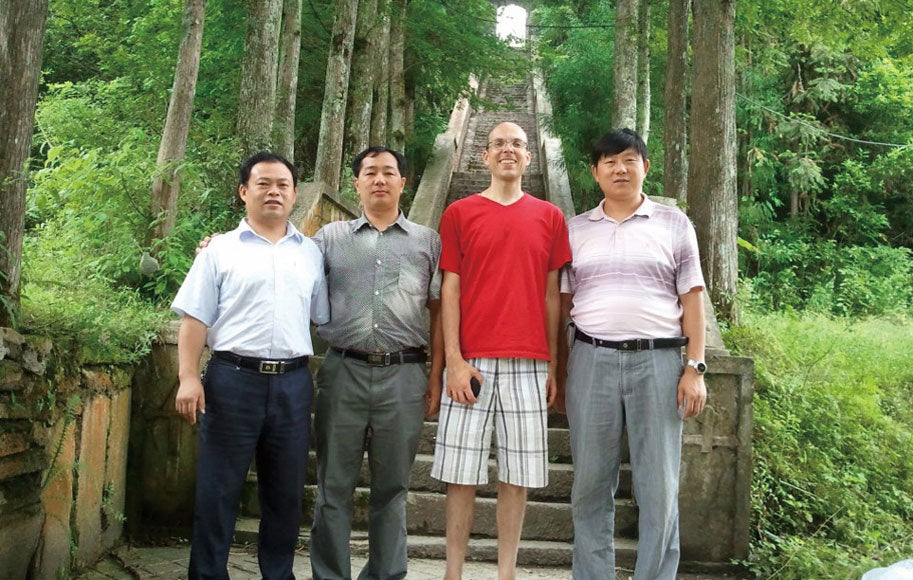
Fathers Peter Zhu, Li Xiaoguo, Li Guanxue, and me at the base of the stairs leading up to the Hualiling church. The residence is now being used as a museum and convent. The neighboring orphanage is used for church events as well.
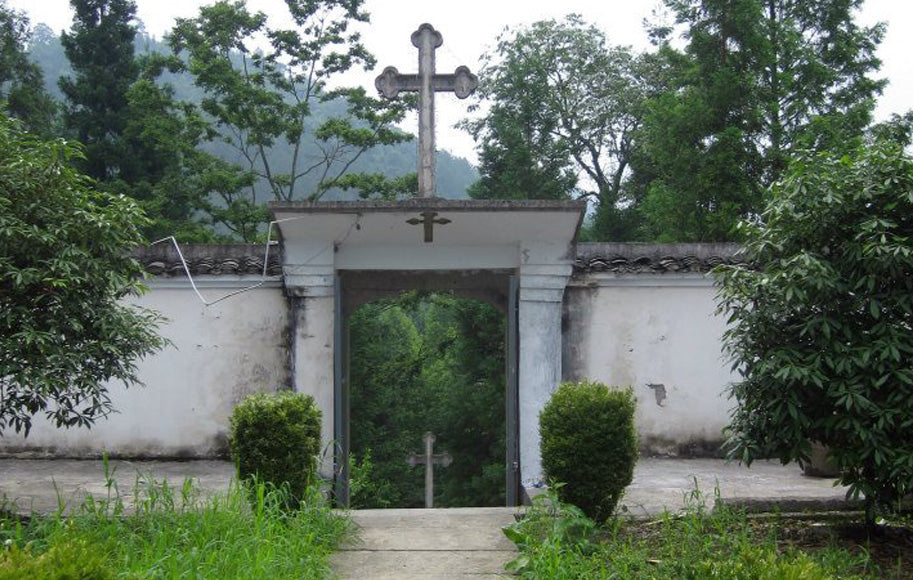
The Hualiling church is surrounded by thick stone walls, being built like a castle. Years ago, bandits were among the greatest threats to the missionaries, with priests known to carry guns to protect themselves.
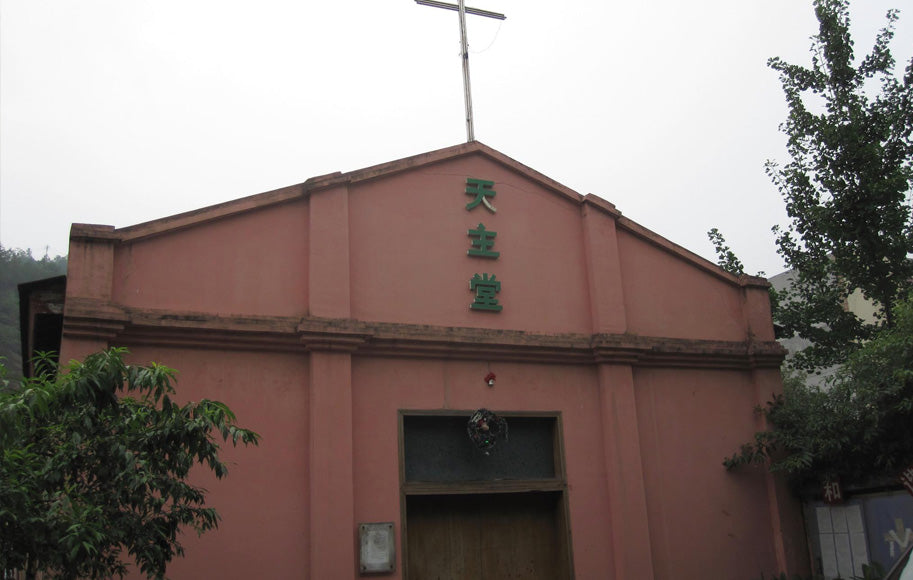
From Lichuan we headed to the city of Enshi, which is also in the Western region of the Yichang diocese. The Enshi church is in a converted warehouse.
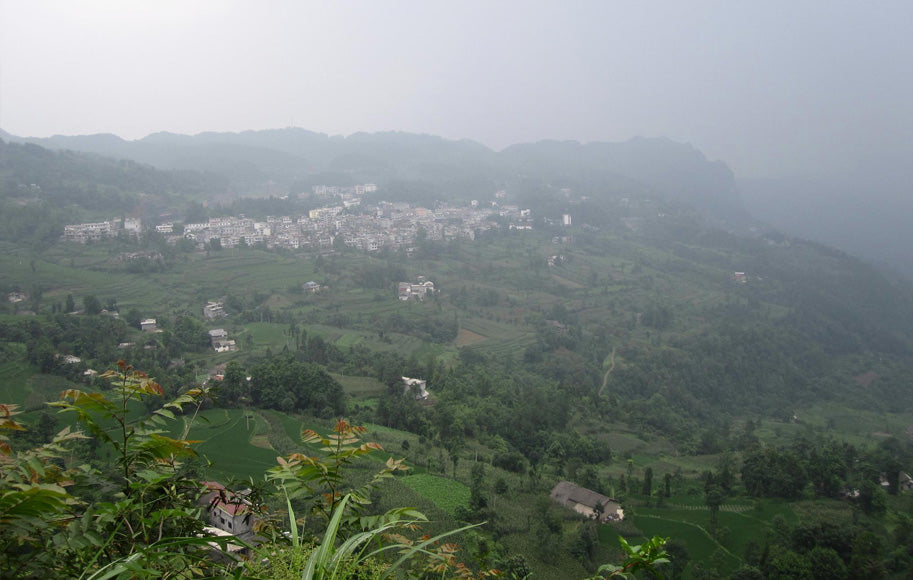
From Enshi, we traveled to the town of Shadi, which is about 70 miles to the East of Enshi.
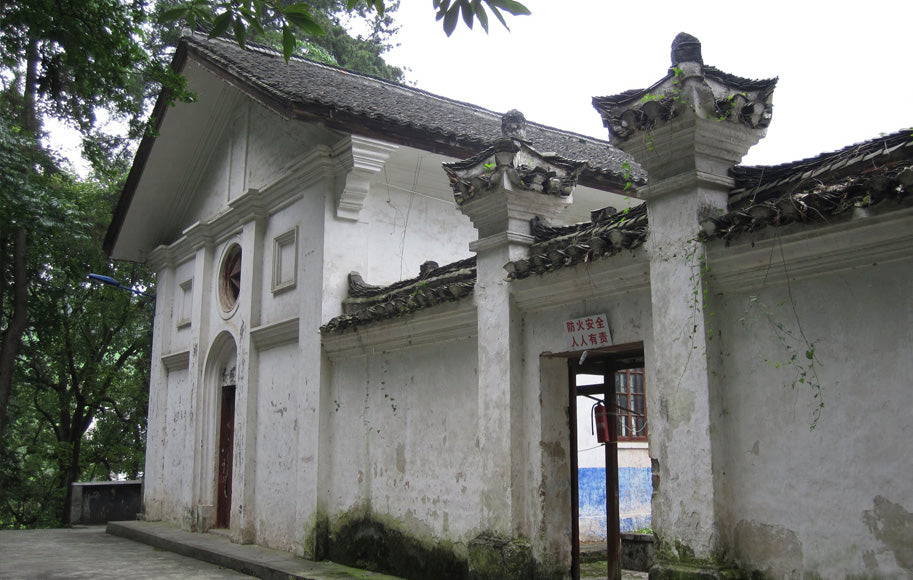
The church in Shadi has since been abandoned and is now used as a storage facility for old furniture.
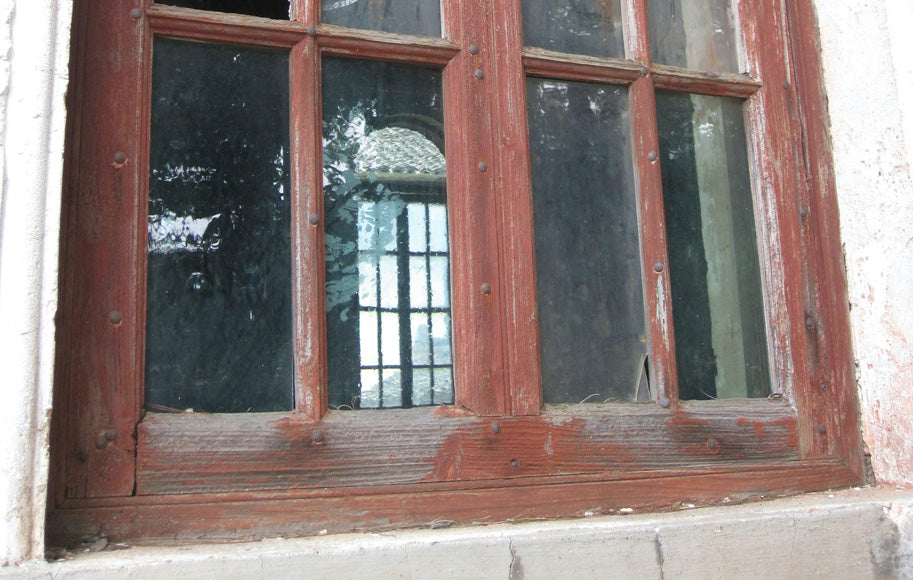
Broken windows in the Shadi church. It is estimated that at its height, there were once 9,000 Catholics in Shadi.
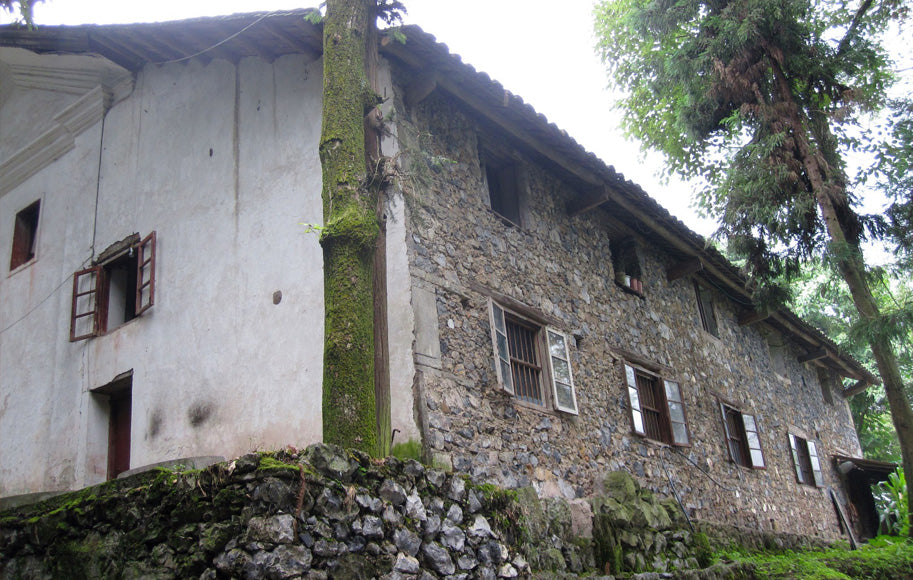
The rectory at the Shadi church is now used for some very basic private residences. The building seemed Northern European in style, a somewhat surreal finding in this remote area of Central China.
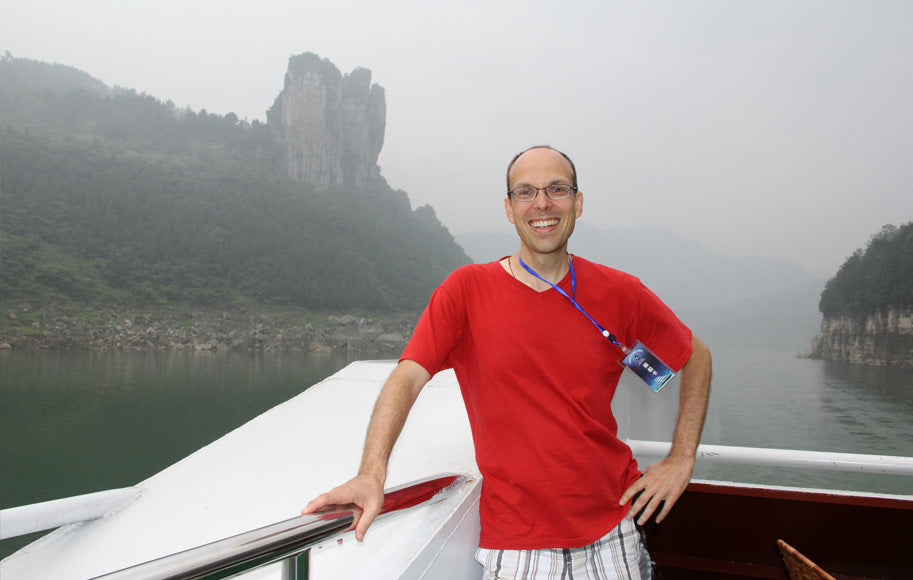
We left Enshi and continued East, and the only practical way to our next destination was by boat down the Qing River.
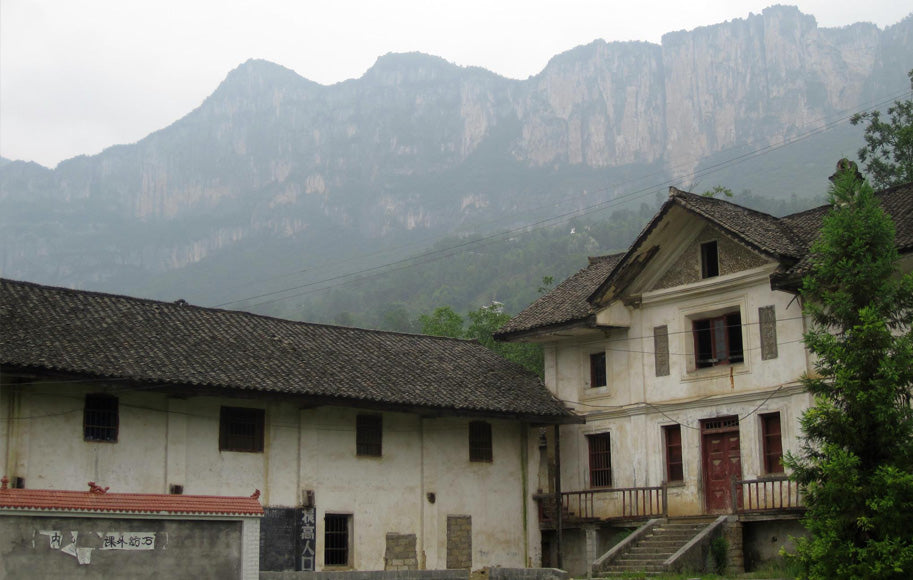
From the river we headed up to Shuya Village in Jianshi County. The church and residence are no longer in use, with the church being used for storage and the house in danger of collapse.
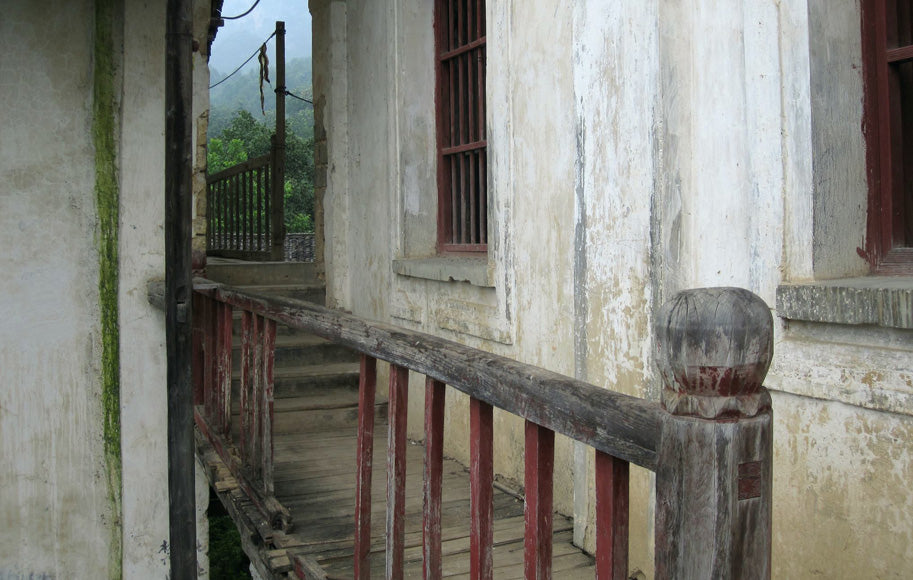
The walkway at the residence is no longer stable. I had to think twice about crossing over.
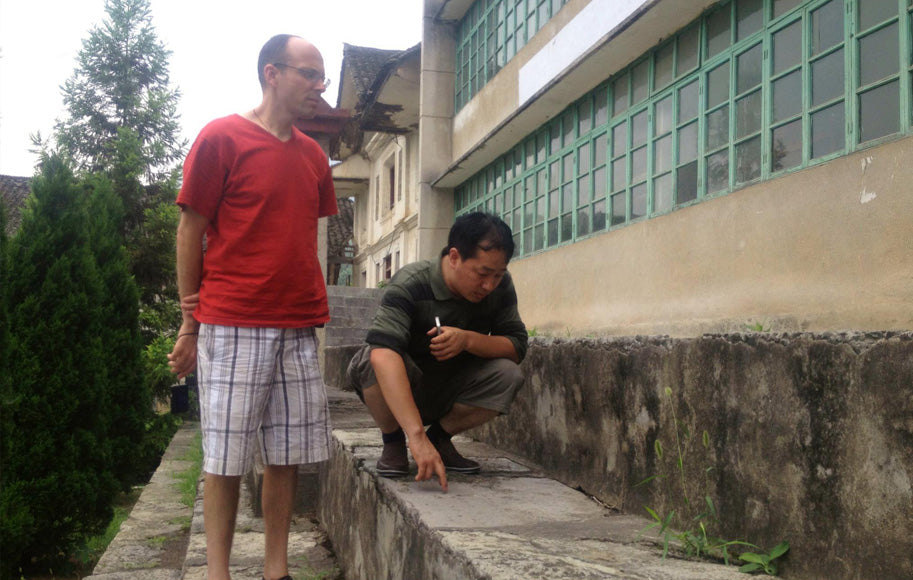
Father Li reads one of the stone markers with historical information that was once part of the church. The stele is now part of the foundation of a neighboring building.
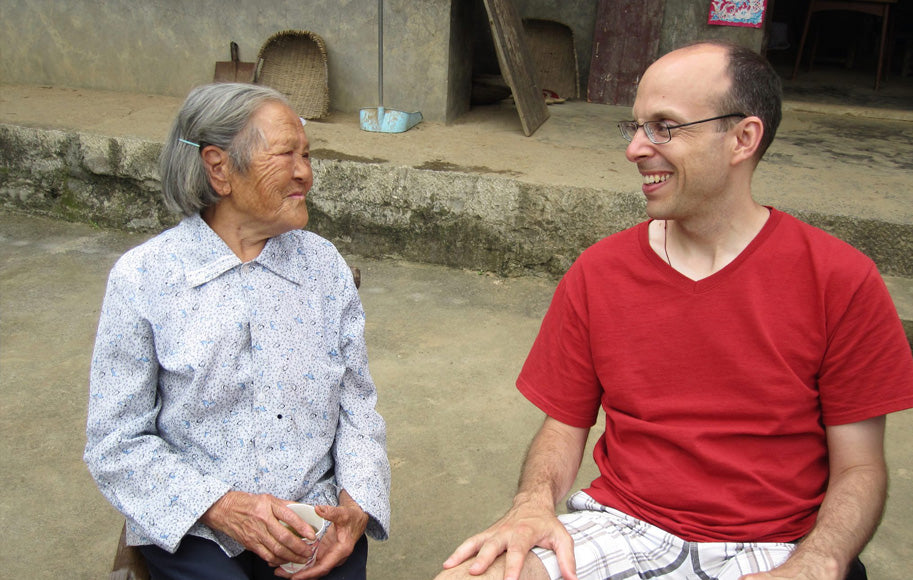
85-year-old Liu Chenggui, baptismal name Catarina, reveled in telling stories of her time with the Belgian priests in the 40s. She still lives in the village of Tongzigou, 10 miles away from Shuya, although at the time she lived at the school near the church.
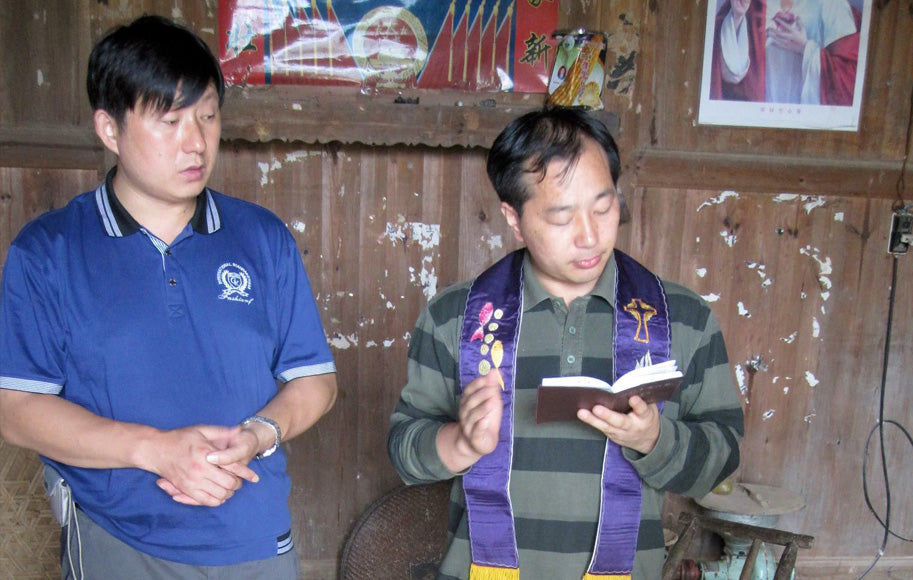
Fathers Li and Li bless water and religious articles for Catarina and her family. It is rare for the villagers to go to the nearest church, some 65 miles away in Enshi along some very bumpy roads.
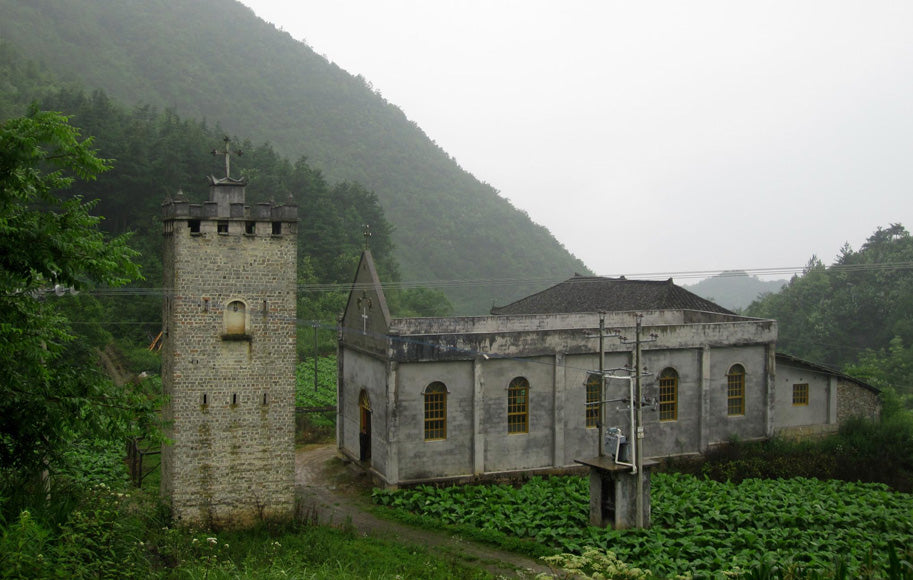
Our journey next brought us to the Shekoushan Village in Badong County. At over 6,500 ft elevation, it was quite chilly in the middle of July.
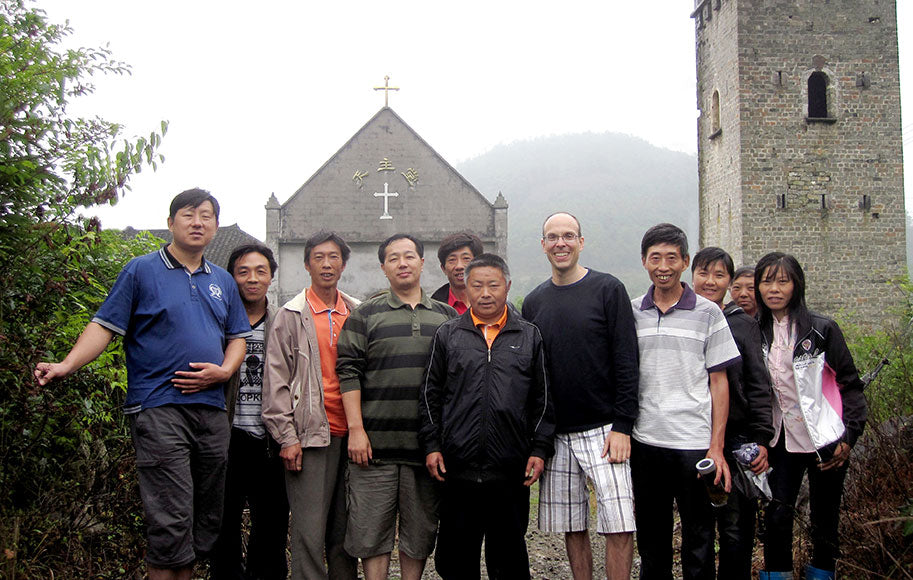
There are about 300 Catholic farmers in Shekoushan, where their farming includes walnuts and corn, as well as the Chinese medicinal herbs of rhizoma gastrodiae and fritillary bulbs.
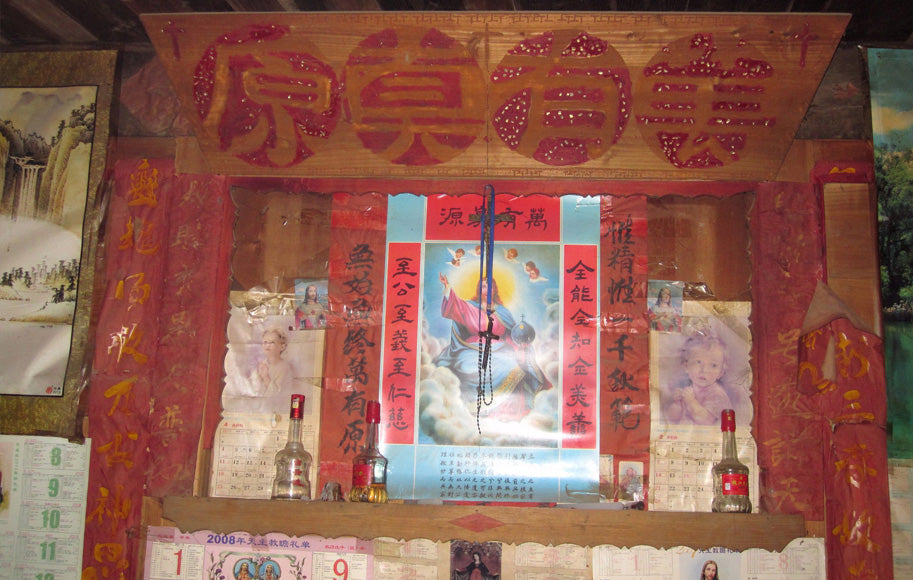
The altar in the home of Wang Yisong, baptismal name Anthony, who hosted us to a home-cooked meal after we sat around a fire cracking freshly-picked walnuts.
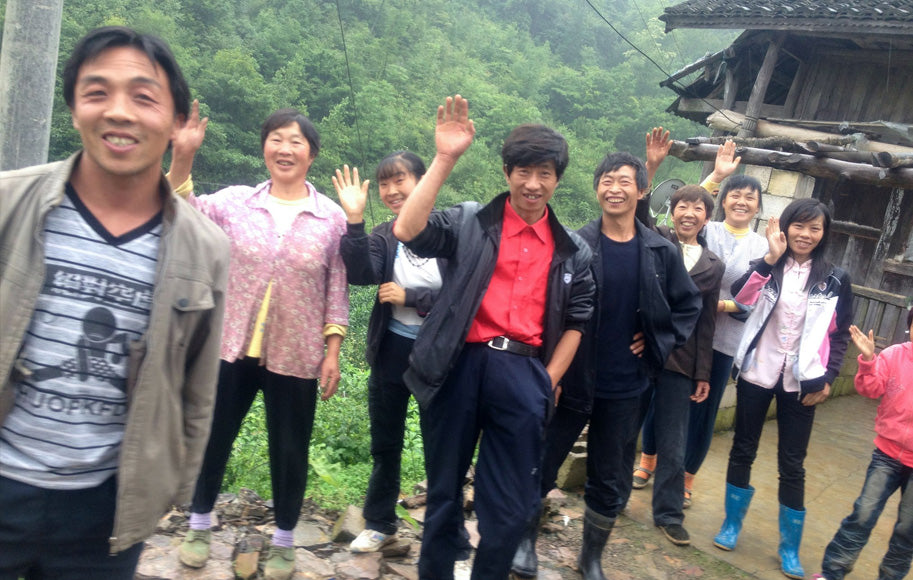
Saying good bye as we left for our next destination.
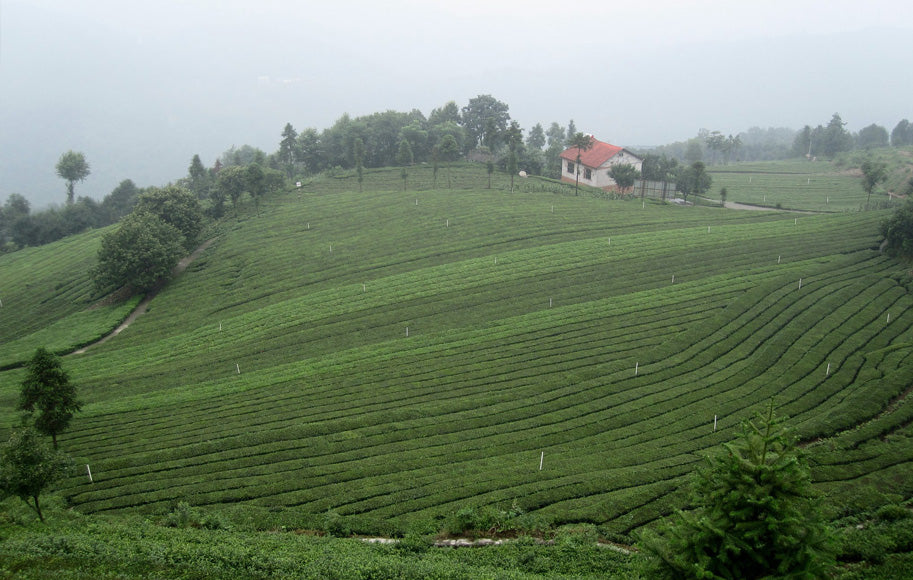
As we entered Wufeng County, expansive tea fields were found at every angle.
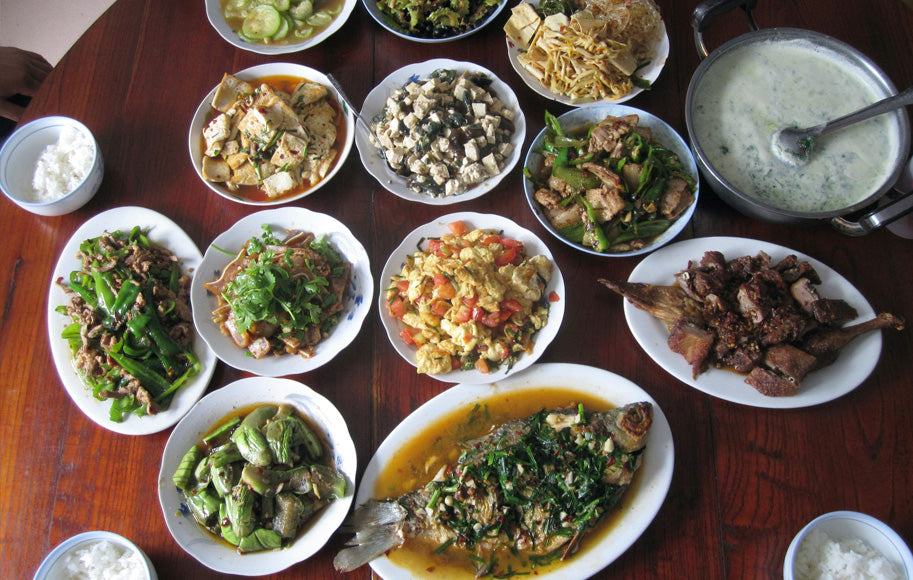
We enjoyed a spectacular home-cooked meal with a family in Qiaohe Village, a Catholic village in the heart of tea country.
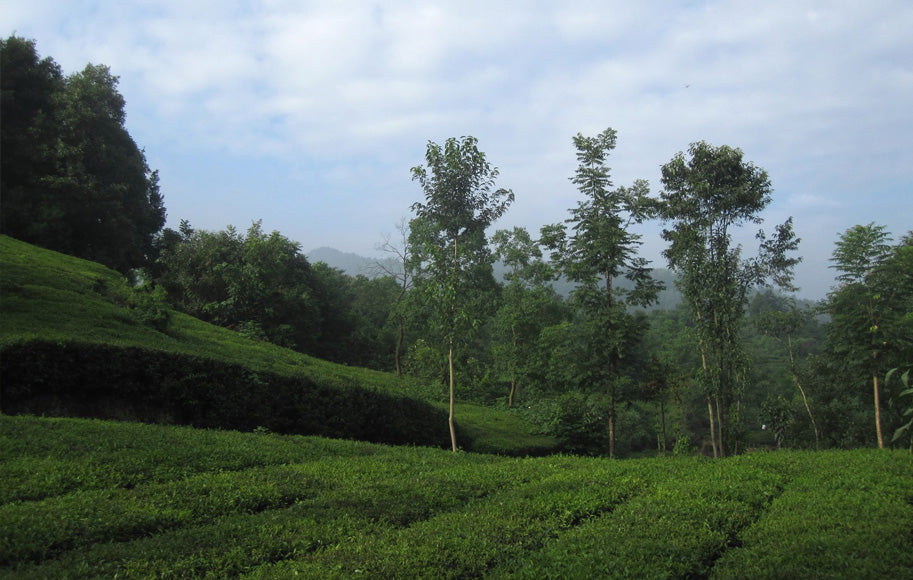
After a day of rain, the sun came out over Qiaohe Village in the late afternoon. I took this as a sign that I'm on the right path.
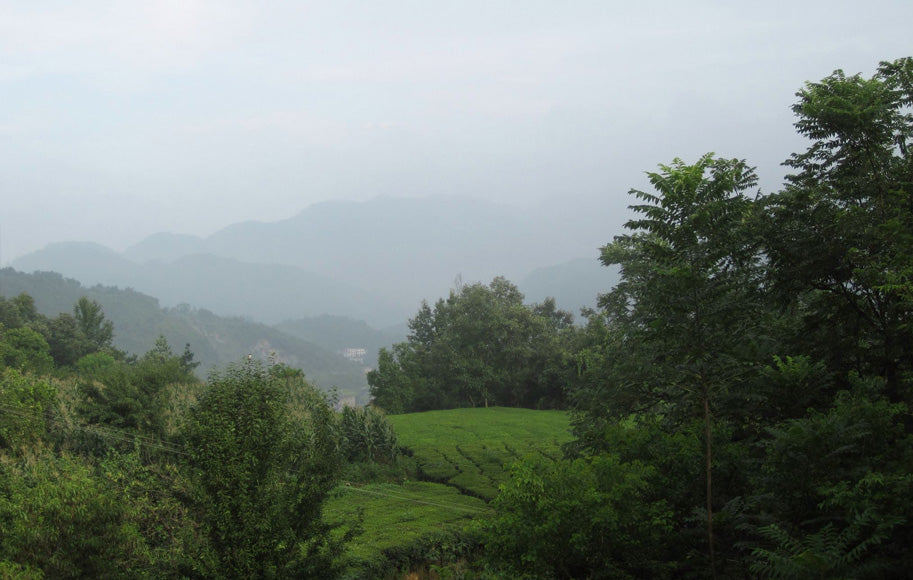
Qiaohe Village is atop a mountain with spectacular views of the tea fields and mountains beyond.
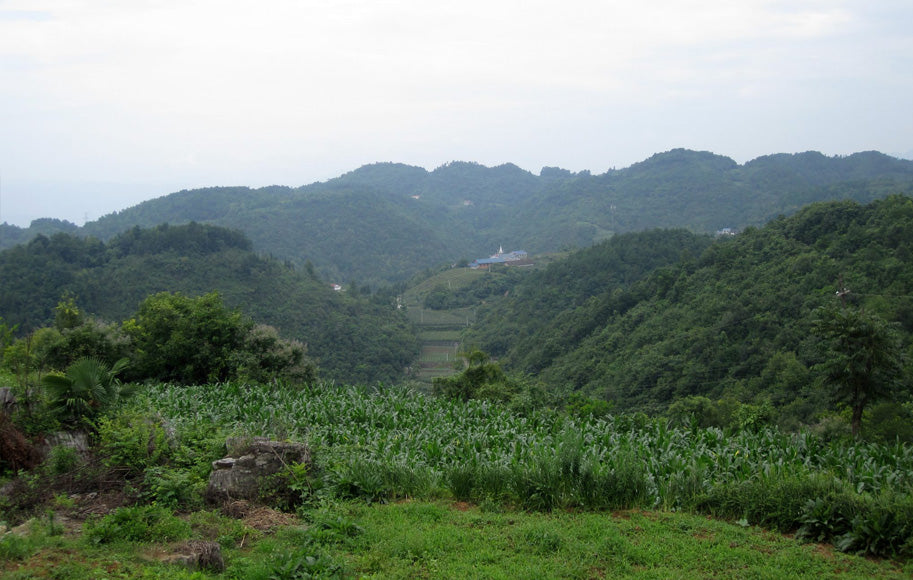
The next day we continued to Qingshuitan Village in Changyang County, another Catholic village. The church can be seen in the distance.
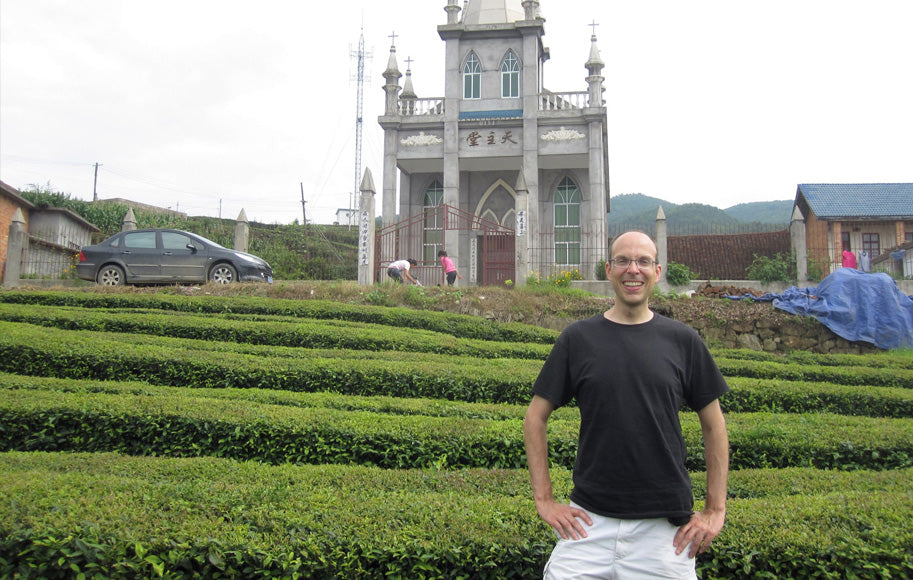
Tea and church culture go together in Qingshuitan, as the church is surrounded by tea fields on all sides.
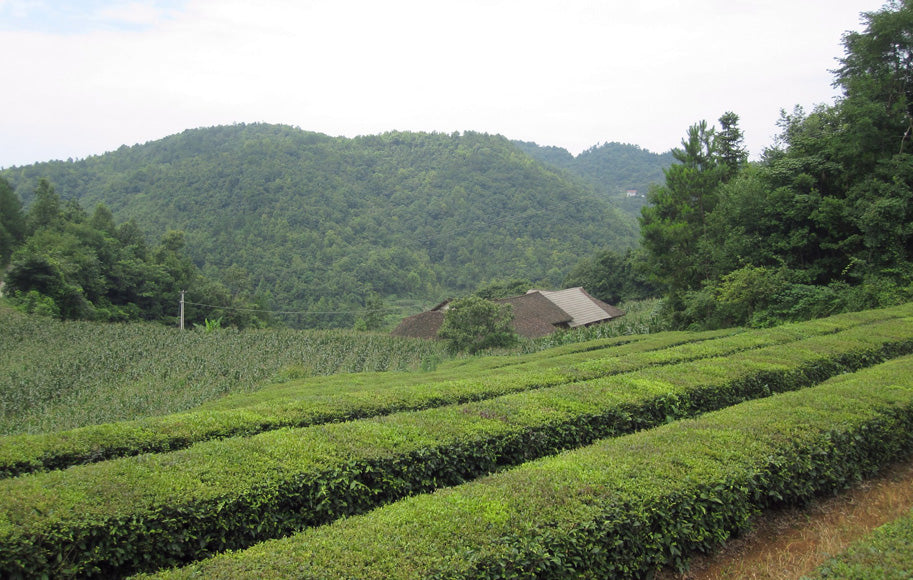
Beautifully kept tea fields among the rolling hills surround the Qingshuitan church.
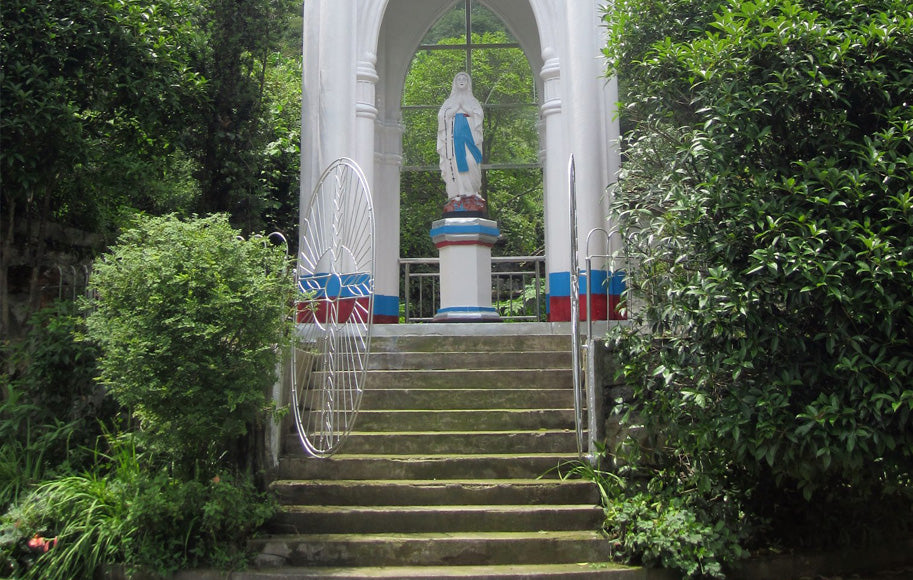
Farther along we came to Shigunshang Village, one of the largest Catholic villages in the area, where the Blessed Mother greets visitors to the church grounds.
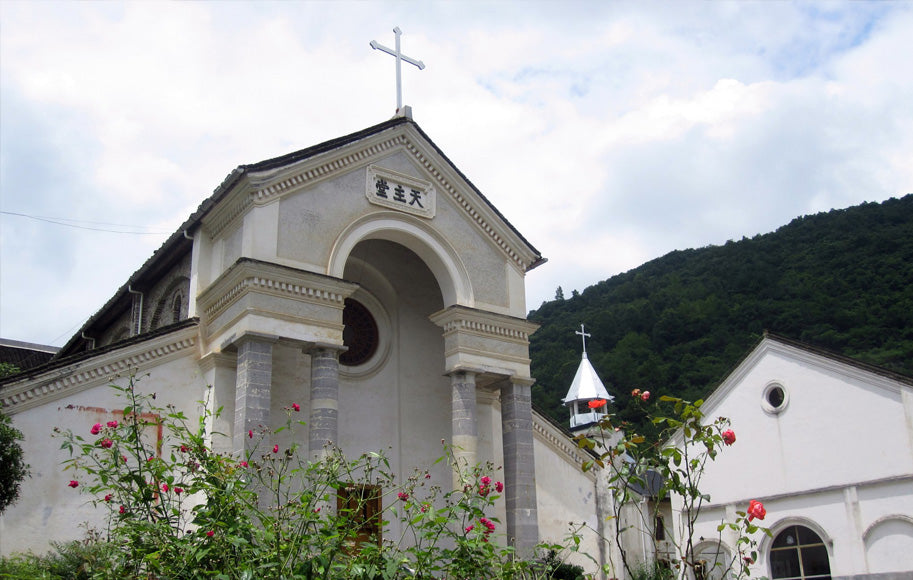
The church is one of the largest in the area, and the residence and classrooms are still in use.
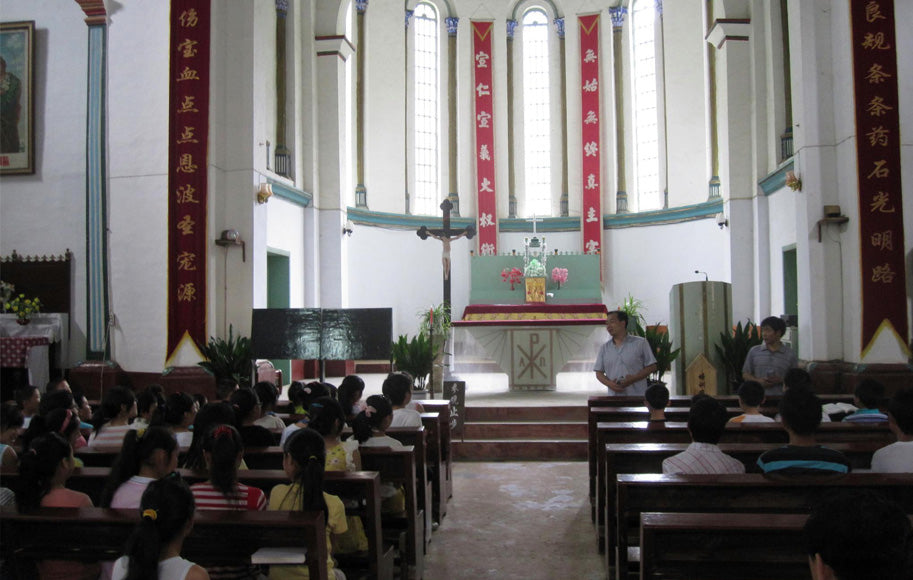
Father Li greets 60 children as they attend a summer camp. I gave a class to the students afterward.
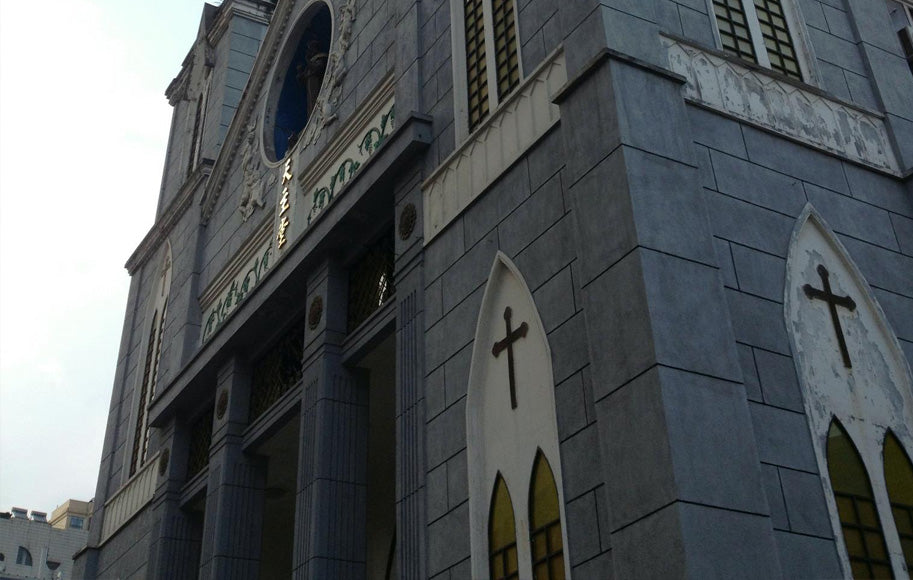
And finally back to Yichang, with the Cathedral of St. Francis at the center of the diocesan seat.
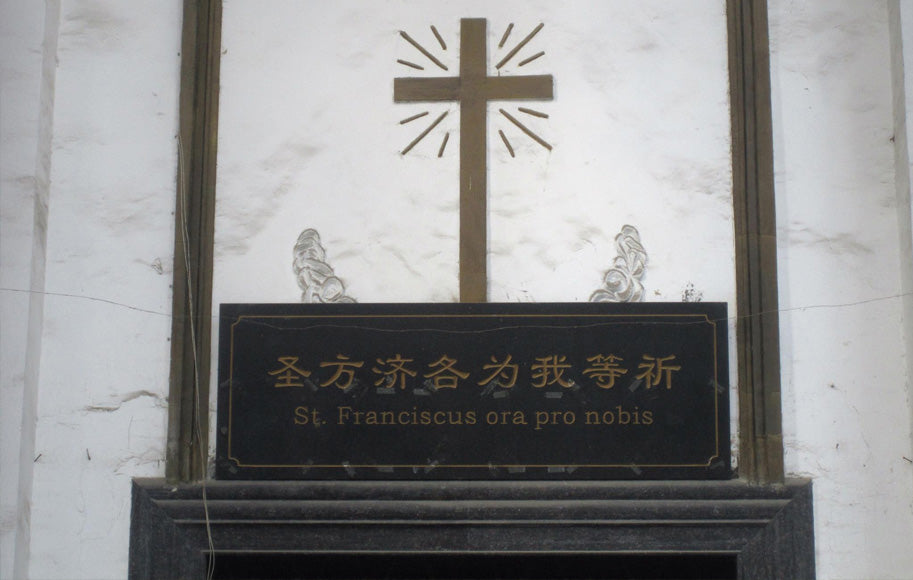
"Saint Francis, Pray for Us" inscribed over the main entrance to the cathedral.
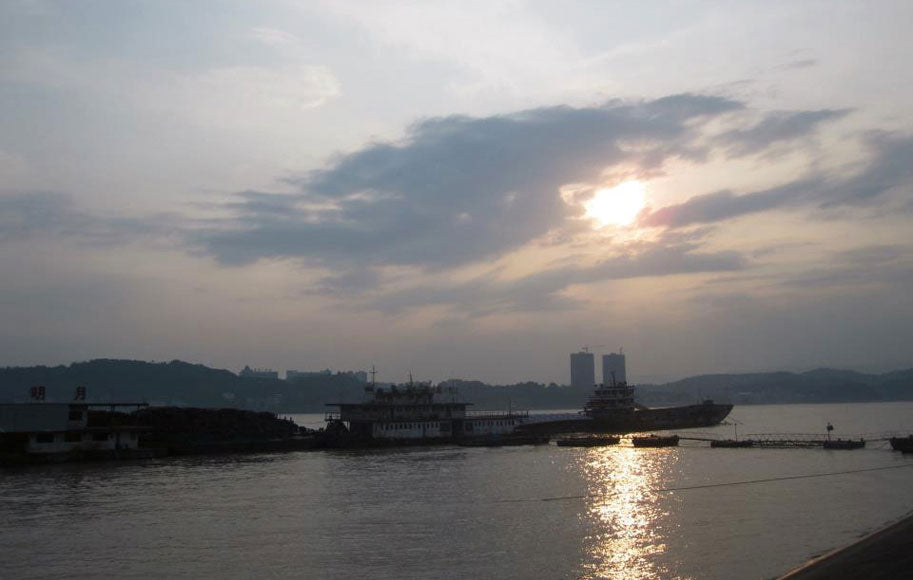
The sun sets over the Yangtze River, taken from the Binjiang park nearby the cathedral. The end of a truly remarkable journey.
The Yichang Diocese is located in the Three Gorges region of Central China. The diocese has an estimated 30,000 Catholics, less than 1% of the overall regional population. Father Li Xiaoguo, diocesan administrator, and I regularly travel through the area. We visit churches and families, celebrating holy days and national holidays. Early in its history, the diocese was administered by Belgian Franciscans. Over the years, many of the church buildings were abandoned or converted to other uses, whereas other churches have been renovated and now have vibrant communities. The photos in this display are from a recent trip and will give you a glimpse of life in the region.





































